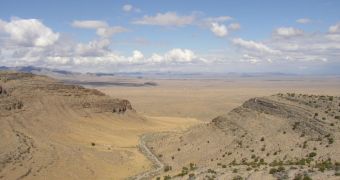For about four billion years after the Earth first solidified from a ball of molten lava, the world's oceans were oxygen-poor mixtures of various chemicals, boasting levels of acidity that were well beyond those life can thrive in. A new study now shows the challenges early life had to face.
Until some 600 million years ago, there was no way for complex life to develop in the oceans, because the waters had little to no amounts of oxygen until the Late Ediacaran Period. It was only then that the precious chemical began making its way into the waters.
Shortly after this event, life began to develop and diversify in the oceans. But this trend did not last for a long time. According to the recent investigation, it would appear that the oceans again became anoxic (oxygen-free) some 500 million years ago.
Biogeochemists at the University of California in Riverside (UCR), who conducted the new study, say that the waters remained unable to support life as we know it for two to four million years afterwards.
What the team is now proposing is that anoxic conditions were in fact commonplace in Earth's distant past, and that they permeated the oceans to a greater degree than originally thought.
“This work is important at many levels, from the steady growth of atmospheric oxygen in the last 600 million years, to the potential impact of oxygen level fluctuations on early evolution and diversification of life,” explains scientist Enriqueta Barrera.
She holds an appointment as the program director of the US National Science Foundation (NSF)'s Division of Earth Sciences (DES), the group that funded this research.
“Our research shows that the ocean fluctuated between oxygenation states 499 million years ago,” says Timothy Lyons, an UCR biogeochemist who coauthored the new research.
“Such fluctuations played a major, perhaps dominant, role in shaping the early evolution of animals on the planet by driving extinction and clearing the way for new organisms to take their place,” he adds.
One of the main avenues of research in determining how early life thrived on Earth is currently determining the reasons why the oceans became anoxic regularly hundreds of millions of years ago.
“Life and the environment in which it lives are intimately linked,” explains the first author of the paper, UCR biogeochemist Benjamin Gill. The expert currently holds an appointment as a postdoctoral researcher at the Harvard University.
“Today, some sections of the world's oceans are becoming oxygen-poor--the Chesapeake Bay (surrounded by Maryland and Virginia) and the so-called 'dead zone' in the Gulf of Mexico are just two examples,” Gill says.
“We know the Earth went through similar scenarios in the past. Understanding the ancient causes and consequences can provide essential clues to what the future has in store for our oceans,” he concludes.

 14 DAY TRIAL //
14 DAY TRIAL //